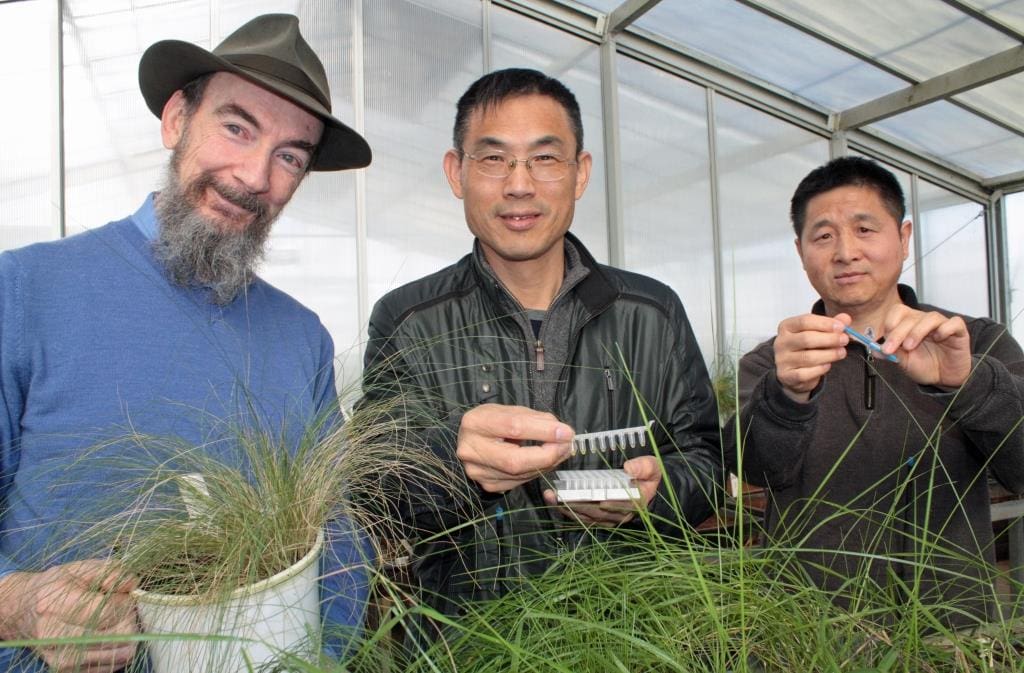
NSW DPI scientists David Gopurenko, Hanwen Wu and Aisuo Wang with the LAMP tool. Photo: NSW DPI
A PORTABLE field kit with the power to identify the DNA of serrated tussock and Chilean needle grass when they first appear in the landscape has been developed by a team of NSW Department of Primary Industries (DPI) scientists.
“The advantage of LAMP, the name given to loop-mediated isothermal amplification of DNA, is that we can quickly and easily identify trace amounts of leaf tissue within an hour at a cost less than $10 per test,” David Gopurenko said.
Along with Aisuo Wang and Hanwen Wu, Dr Gopurenko developed the field kit which uses LAMP technology to identify the invasive weeds in the field.
He said early detection was the key to managing serrated tussock and Chilean needle grass.
“Weed seedlings and young plants are difficult to distinguish from similar looking native grasses and the development of this DNA-based tool will help accelerate their detection.
Dr Gopurenko said when the weeds first emerge in new locations, they often remained undetected until well-established, and then became difficult to control.
“These invasive tussock grasses can quickly take over vast areas, competing with valuable pasture species.
“If land managers can detect these weeds when they first appear, control measures can be effectively initiated to get rid of the weeds before they become a huge problem.”
In the past four months, DPI has delivered workshops demonstrating the new tool to more than 150 biosecurity officers and land managers from NSW, the Australian Capital Territory, Queensland and Victoria.
Further development of the technology could see the method modified for diagnostics of other target weeds, insect pests and pathogens.
Chilean needle grass Nassella neesiana and serrated tussock N. trichotoma, are introduced weeds, which cost more than $40 million in lost farm production each year.
The LAMP project is based on outcomes from the NSW Government’s Weeds Action Program, and has been funded by the Australian Government through the Control Tools and Technologies for Established Pest Animals and Weeds Program.
Source: NSW DPI

HAVE YOUR SAY